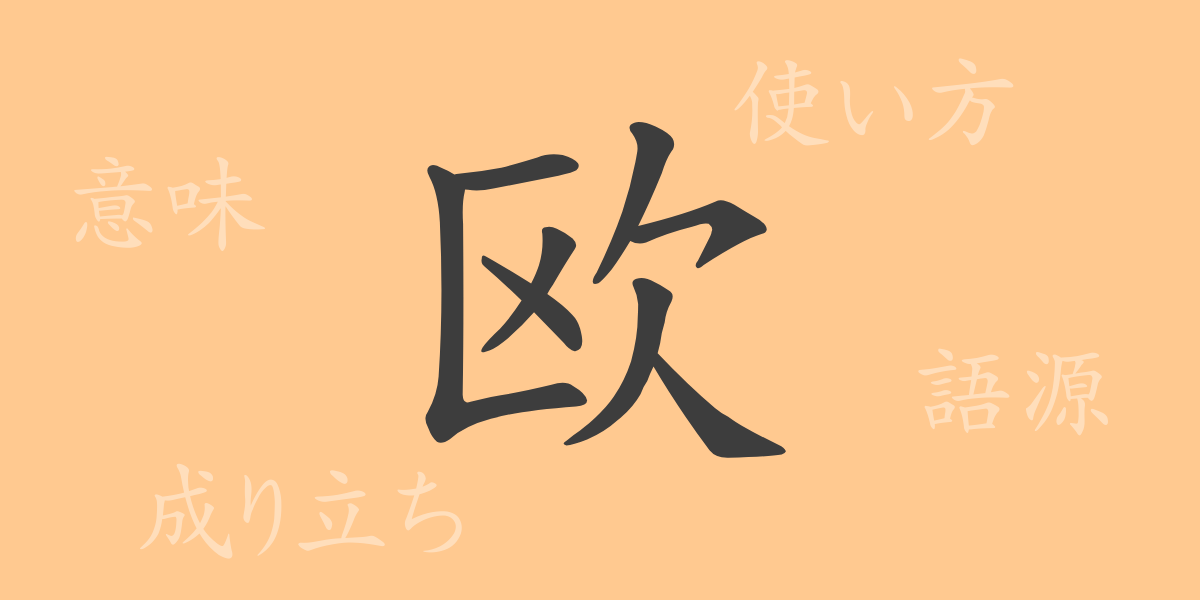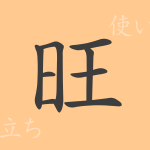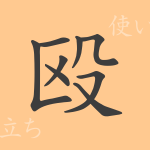“
Language is a mirror reflecting culture and history. In the Japanese language, kanji characters are particularly known for their rich expressiveness. In this article, we will focus on one of the common kanji characters in Japanese, “”欧”” (ō), delving into its origin, meaning, usage, and even the compound words and idiomatic phrases that use this kanji. As the relationship between Japan and Europe deepens, the meaning of “”欧”” (ō) is becoming increasingly familiar. Let’s start this fascinating journey into the world of kanji.
The Origin (Etymology) of 欧 ( Ō)
The kanji “”欧”” (ō), from its shape alone, evokes some strong emotion, but it is actually composed of a variation of “”区”” (Ku) and “”口”” (Kuchi). In ancient China, this kanji was believed to have meanings such as “”to call”” and “”to shout.”” Later, “”欧”” (ō) came to be used as a word referring to Europe. This is because, during the process of Japan’s exposure to Western culture, it was adopted as a convenient expression to refer to Europe as a whole.
The Meaning and Usage of 欧 (Ō)
In modern Japanese, the main meaning of “”欧”” ( ō) refers to Europe. It is often used in the form of “”欧州”” ( ōshū) or “”欧米”” (ōbei) when referring to country names or regions. It can also be used in cultural and historical contexts, such as “”欧化”” (ōka), meaning “”Europeanization.”” These usages indicate that “”欧”” (ō) is employed as a convenient kanji for expressing comparisons and contrasts with foreign countries as Japan internationalizes.
Reading, Stroke Count, and Radical of 欧 ( Ō)
The reading and structural characteristics of the kanji “”欧”” (ō) are as follows:
- Reading: The on’yomi is “”ō,”” and there is no specific kun’yomi.
- Stroke Count: A total of 8 strokes
- Radical: The radical is “”欠”” (Ketsu).
Idioms, Phrases, and Proverbs Using 欧 (Ō) and Their Meanings
Many of the compound words and idiomatic phrases containing “”欧”” (ō) are related to Europe or Western culture. Here are a few examples:
- 欧州 (ōshū): Europe, especially in political or economic contexts.
- 欧米 (ōbei): A word referring to Europe and America together. Often used to refer to Western culture or developed countries.
- 欧風 (ōfū): European style. Refers to things that incorporate European styles, such as architecture or fashion.
Summary of 欧 (Ō)
The kanji “”欧”” ( ō) has undergone changes in both form and meaning over time and has become established in the Japanese language today as a character symbolizing Europe. In the context of Japan’s position in the international community and its interactions with foreign cultures, “”欧”” ( ō) has come to be used in various contexts. By examining this single kanji, we can sense how closely language is tied to culture and history. The next time you come across “”欧”” ( ō), try to imagine the rich story behind it.
“

























